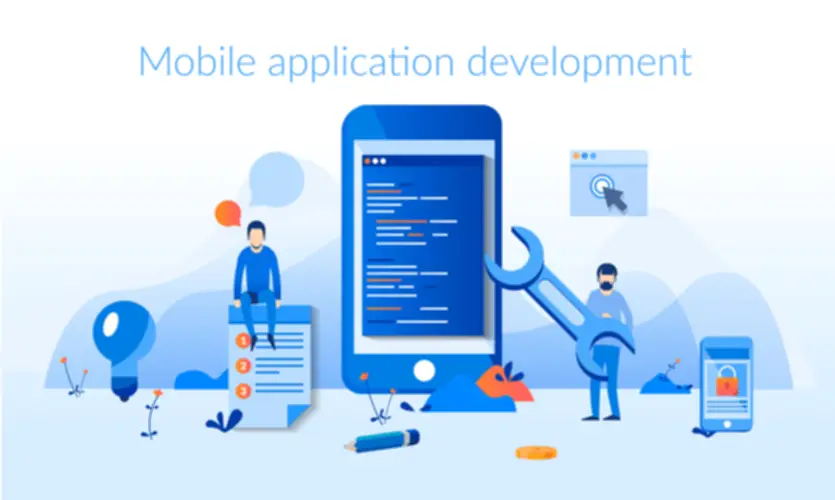Nonetheless, the complexity of managing an Enterprise Service Bus (ESB) and the potential for bottlenecks can lead to increased operational prices. Assess the supply of in-house experience soa vs microservices and the scalability necessities of your small business. By rigorously evaluating these components alongside your strategic goals, you presumably can select an architectural strategy that balances instant costs with long-term resource effectivity and scalability. Moreover, SOA’s capacity to attach disparate techniques helps complicated workflows and enterprise processes, enhancing organizational agility and efficiency. This makes SOA significantly useful in giant organizations requiring sturdy, scalable, and versatile IT solutions.
In this case you may double that value to account for high load circumstances, leading to a timeout worth of four,000 milliseconds. Although the end result of these error circumstances is identical (the service request can’t be processed), they are handled in numerous ways. Since service availability is said to service connectivity, there is not much a service shopper can do except to retry the connection for a set variety of instances or queue the request for later processing if attainable. Homogeneous versioning entails using contract model numbers in the same service contract. Notice in Determine 1-1 that the contract utilized by service shopper A and service shopper B are both the same circle form (signifying the same contract) but contain different model numbers.
Scalability
Sadly, microservices must as soon as again take a back seat to SOA with respect to this structure capability. Microservices architecture doesn’t help contract decoupling, whereas contract decoupling is likely certainly one of the primary capabilities provided within a SOA. If you require this level of abstraction in your architecture, you will want to look towards a SOA resolution somewhat than a microservices one for your software or system. If the data required by a service can’t be derived from one other supply or calculated utilizing the information offered by the service shopper, the service name will fail as a outcome of the service contract isn’t satisfied. Fortunately, lookup capabilities and primary transformations (such as date, time, and quantity fields) can often fix most contract variances between service customers and companies. Contract decoupling is a very powerful functionality that provides the best diploma of decoupling between service customers and companies.
Quite than use ACID transactions, service-based architectures rely on BASE transactions. BASE is a family of types that embody basic availability, gentle state, and eventual consistency. Distributed purposes counting on BASE transactions try for eventual consistency within the database somewhat than consistency at every transaction. When you deposit money into your account by way of an ATM, it may possibly take from several minutes to a quantity of hours for the deposit to look in your account.

Although microservices and SOA both depend on services as the main Warehouse Automation structure component, they differ greatly in phrases of service traits. One Other crucial topic throughout the context of service contracts is contract versioning. Let’s face it—at some point the contracts binding your companies and repair consumers are certain to vary.
- Nevertheless, more sometimes SOA relies on multiple services to complete a single business request, whereas microservices structure typically does not.
- SOA additionally supports protocol-aware heterogeneous interoperability, nevertheless it takes this concept one step additional by supporting protocol-agnostic heterogeneous interoperability.
- Sometimes, the SOA connects these modules by way of a robust communication and management layer known as an enterprise service bus (ESB).
- This functionality permits a part (usually a middleware component) to add or change request data so that the info sent by the service consumer matches the info anticipated by the service (and vice versa).
- Additionally, the independence of microservices permits organizations to experiment with new features and roll them out incrementally, reducing danger and improving the overall quality of the applying.
SOA is a good alternative for large organizations where multiple technologies and functions should work together, primarily when they’re unfold across totally different departments or enterprise models. Suppose concerning the scale of your systems, the way you need your teams to work, and whether your focus is on integration or agility. Both approaches have their strengths and might help you build techniques which would possibly be efficient today and ready for the future. SOA and microservices share the objective of modularity, but they’re fundamentally totally different in how they approach it. This separation ensures service independence, enhancing fault isolation and enabling companies to be scaled or up to date with out impacting others.
What They’ve In Frequent

In SOA, all purposes ought to be able to obtain and update data on the source level at the similar time. Nonetheless, this method additionally creates dependencies throughout providers, which is not ideal in a microservices architecture. To preserve independence among all companies and applications, a microservices model provides native entry to all knowledge needed by every service. This creates situations of information duplication and, by extension, complexity, but avoids dependencies that would influence efficiency. One of the outstanding challenges of microservices is the intricacy of managing distributed systems.
Microservices Vs Soa: Key Differences
Both approaches provide methods to decompose complex functionalities into smaller, manageable units. This article will discover the important thing variations between them, serving to you determine which architecture most closely fits your needs. Determine 3-8 also illustrates the variations that may happen within SOA with regard to service choreography. For example, an enterprise service might must call an utility service, and that utility service could in flip need to call an infrastructure service to complete its enterprise processing.

More particularly, service components within a microservices architecture are usually single-purpose companies that do one factor really https://www.globalcloudteam.com/, rather well. With SOA, service components can vary in dimension anyplace from small software companies to very giant enterprise companies. In truth, it isn’t uncommon to have a service part inside SOA represented by a big product or even a subsystem. Service-oriented structure was largely created as a response to traditional, monolithic approaches to constructing applications. SOA breaks up the components required for applications into separate service modules that talk with each other to fulfill specific enterprise aims. Every module is considerably smaller than a monolithic software, and may be deployed to serve totally different functions in an enterprise.
Distributed architectures provide significant benefits over monolithic and layered-based architectures, including better scalability, higher decoupling, and higher management over growth, testing, and deployment. Elements inside a distributed structure tend to be extra self-contained, permitting for better change control and easier maintenance, which in flip results in applications which may be extra strong and extra responsive. Distributed architectures also lend themselves to more loosely coupled and modular functions. Although microservices and SOA are very different structure types, they share many characteristics. Each service in a microservices architecture is self-contained, unbiased, and serves a singular business goal, enabling steady deployment and scaling. This modularity allows for flexibility in using totally different programming languages and frameworks, making microservices particularly suited to a polyglot surroundings.
Out of the three service characteristics described in this chapter, service granularity has probably the most potential impact on your selection of which architecture sample is finest suited in your state of affairs. The very small, fine-grained service concept inside microservices allows this architecture sample to improve all aspects of the software growth lifecycle, including development, testing, deployment, and upkeep. Though moving to services that are more coarse-grained certainly resolves performance and transactional points, it additionally adversely affects growth, testing, deployment, and maintenance. If you find that your services vary in size from small to large, you’ll probably must look towards more of a SOA sample than the more simple microservices structure pattern.
While there can be any variety of service sorts within SOA, the architecture pattern defines 4 primary varieties, as illustrated in Determine 2-2. Consumer-driven contracts, however, are based on a closer relationship between the service and the service customers. With this model there’s robust collaboration between the service owner and the service customers in order that wants of the service shoppers are taken into consideration with respect to the contracts that bind them.